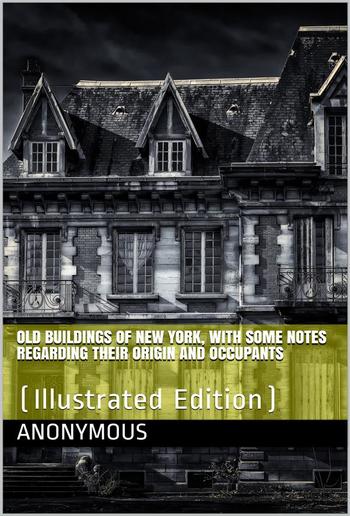
Anonymous - Old Buildings of New York / With Some Notes Regarding Their Origin and Occupants
Old Buildings of New York / With Some Notes Regarding Their Origin and Occupants
(Illustrated Edition)
Anonymous
Description
Among buildings that will be recalled to memory by the older citizens it would have been a satisfaction to have been able to show pictures of the Brick (Presbyterian) Church, that stood, with its yard, on Park Row, taking in the block bounded by Spruce, Nassau, and Beekman streets; or Burton’s Theater in Chambers Street; the Irving House, later Delmonico’s, on the corner of Broadway and the same street; of the old New York Hospital on Broadway near Thomas Street, standing far back with its beautiful lawn and grand old trees; of the St. Nicholas Hotel near Spring Street; of the old Coster mansion (later a Chinese museum), built of granite in the style of the Astor House, near Prince Street; and Tiffany’s place across the way, with the same Atlas upholding the clock over the door; of the Metropolitan Hotel on the next block with Niblo’s Garden; of Bleecker Street with Depau Row;3 of Bond Street with the large Ward (later Sampson) residence on the corner; the Russell residence on the corner of Great Jones Street; the famous old New York Hotel; the Lorillard mansion at Tenth Street; the large brownstone residence of Judge James Roosevelt, near Thirteenth Street, famous for the hospitality of its owners, and the red brick residence of Cornelius V. S. Roosevelt, grandfather of the President, on the corner of Union Square, having the entrance on Broadway.
The older resident can recall Union Square when the buildings were nearly all private residences, conspicuous among which were the Parish house on the north side and the Penniman (later the Maison Dorée) on the south.
The appearance of the entire city now gives the impression of life and bustle. With the exception of Gramercy Square and Irving Place, there is hardly a spot in the lower part of the city that now has any appearance of repose. Thirty years ago the city presented a wholly different aspect. Fifth Avenue, from Washington to Madison Square, was, in the opinion of the writer, one of the finest residence streets anywhere. At most hours of the day the people on the sidewalks were comparatively few and there was a very small proportion of business wagons and trucks that used the roadway as compared with the numbers that do so to-day. University Place was a street of nearly the same character, as was also Second Avenue from Seventh Street to Stuyvesant Square. This street had a charm of its own. Lined as it was on either side with spacious residences, it gave the impression of a street of homes. The façades of the largest houses were simple and unpretentious, forming a marked contrast to some of the houses uptown to-day.
It was with a view of preserving the appearance of some of these landmarks that may be torn down any day that these pictures were taken. Endeavor has been made to present those that have been in existence about fifty years. With two exceptions the buildings represented are now (1906) standing.

